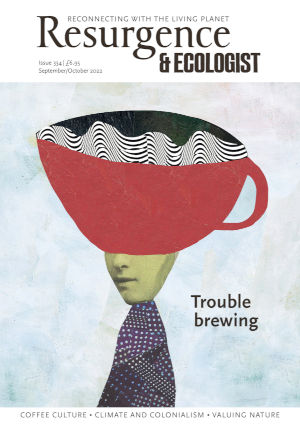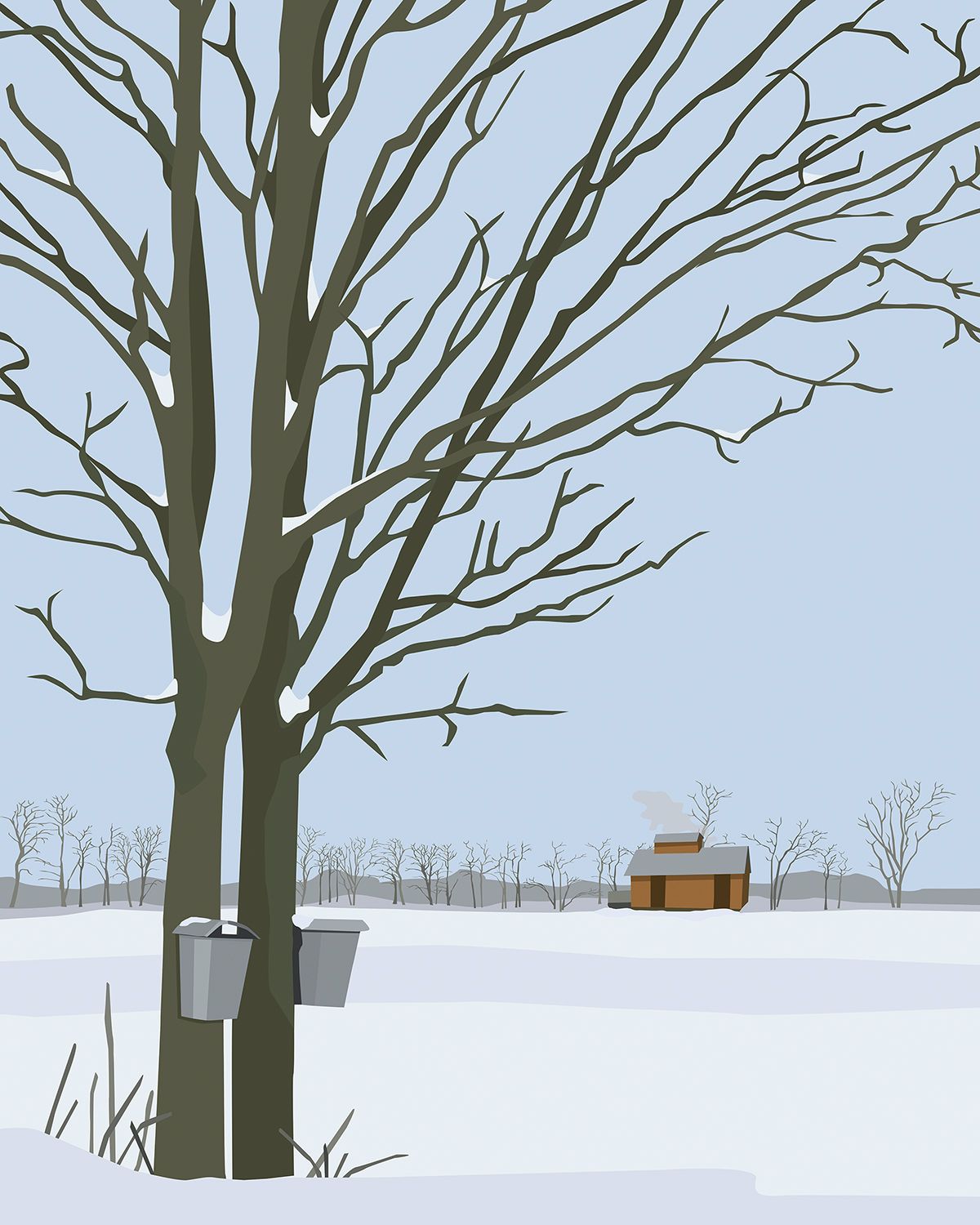At the age of 11, I found myself staring at a disco ball in a big log cabin in a clearing in the woods. It was the month of March, somewhere in the countryside a few hours from my adopted city of Montreal. I was on a school outing and that morning we’d arrived to take part in a spring ritual: sugaring off. It was a day that would spark a quiet, enduring affection for a tree.
The woods were full of mature maples, tall and sturdy. Each had a bucket hanging from it, for this was the time of year when the trees were tapped and the sap within was collected and boiled. The sap would turn into maple syrup, thick, treacly and amber gold. (First Nations peoples had once used hollowed-out logs in lieu of buckets, and hot rocks from a fire to heat the sap.)
The maple syrup was poured on a cone filled with snow and handed to me. It became toffee-like and I was given a tiny wooden spoon to scoop it up with. The maple ‘taffy’ was very sweet but also delicious. If my appreciation was muted, I could blame it on the feast that preceded the tasting – a feast that owed itself, both in spirit and in victuals, to the maple tree. It involved a maple-baked ham and potatoes, beans baked with maple syrup, and maple sugar pie. Only the mysterious oreilles de crisse (which I later learned was fried pork rind) and the pea soup, were maple-free – though I can’t say this with absolute certainty. The maple was a very generous tree, you might say, and did a good job of helping hearts to feel lighter after the long winter freeze.
After the meal, I could only stare at the disco ball – I was too stuffed to dance – but the experience cemented the tree into my consciousness, and a kind of association was formed: maple tree and delight went hand in hand. The tree became the backdrop of my Montreal childhood, a bellwether of the seasons. It wasn’t that I walked around serenading maples or hugging them, but the tree was a silent witness to my comings and goings, and ever present, so it became a part of my landscape. It was never not there.
The maple tree, specifically the sugar maple, has an iconic status in Canada – it is the country’s national tree. Its leaf adorns the flag and the shirt of a proud ice-hockey team. Leaf-shaped biscuits are a staple of airport souvenir shops. I read somewhere that violins and guitars, as well as furniture, are made from maple wood. I was astonished to learn, via the Tree Canada website, that there are over 100 species of maple, within the genus Acer. Ten of those are native to Canada, including the sugar maple, the black maple, the silver maple and the red maple.
Did I grow up wandering around trying to work out which maple was which? No, I did not – the thought would never have entered my head. I would simply have seen a sugar maple and clocked it as a ‘maple tree’. (I broached the subject with a Canadian friend who was passing through London recently. I told her I was writing about my relationship with the maple tree and she did not, I note, press me as to which type of maple I would be writing about. I’d hazard a guess that she too visualised a sugar maple.)
Most maples have a few key features that make them easy to spot. In arboreal terms, they have simple, not compound, leaves, multiple lobes that have pointy tips, and veins that start at a central point. (Take a look at the Canadian flag if you want to be sure.) I think they look like a child’s hands, perky and optimistic, if such a thing can be said of a leaf. The tree has a single trunk, which is dark or greyish-brown in colour with vertical strips. The bark’s texture varies depending on its age. Songbirds like to nest high up among maple tree branches, and caterpillars seem fond of hanging out there too – once or twice as a child I had one fall on my head, which I was not best pleased about.
In summer, families in my neighbourhood and even further afield liked to picnic at Angrignon Park. This was a gorgeous swathe of Nature, a tree haven with streams, weeping willows and ponds, hidden paths, even a waterfall – and, yes, scores of maple trees.
If we were having a park picnic or barbecue, that meant it was hot and sunny and humid, so we’d find shade under the cooling canopy of the trees. I’d watch idly as squirrels scooted up them, and occasionally brush leaves off my hair or plate.
But it was in autumn that the maple tree really came into its own. The stupendous colours of its leaves, the crimsons, golds, oranges, russets and yellows, dazzled and enlivened, became a carnival under blue skies. I took this seasonal display for granted: it was just how things were, these flaming colours an annual rite of passage, part of the joy of living in my beloved Montreal.
When the leaves would at last sweep across the sky in a flurry and leave the branches bare, they would be raked across lawns and lit up in bonfires that coincided with the mischief of grinning pumpkins, the thrill of Halloween and trick-or-treating. Often toasted marshmallows were involved. In the winter months, on bright-sky days, I’d cross-country ski along park tracks amid the slumbering maples. And then spring and sugaring-off season would swing round and the maple tree’s cycle, and mine, would begin anew.
I live in southwest London now, and my childhood exists only in a time capsule in my heart and mind – but the maple tree will always be synonymous with the land that shaped me, the land where half my heart lives.







